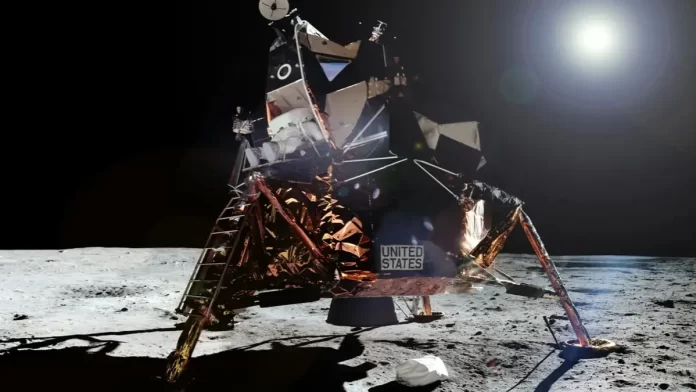In a historic milestone reminiscent of the Apollo era, an American spacecraft has touched down on the lunar surface for the first time since the 1970s. The uncrewed commercial robot, named Odysseus and funded by NASA, represents a crucial step in paving the way for future US astronaut missions to Earth’s cosmic neighbor later in this decade. United States back on the Moon for the first time since 1972
Developed by Houston-based Intuitive Machines, Odysseus completed its landing near the lunar south pole on Thursday at 2323 GMT. The descent was a tense affair, requiring flight controllers to employ an experimental landing system. It took several minutes to establish radio contact with the lander after its safe landing.
NASA Administrator Bill Nelson hailed the achievement, stating, “Today marks the first time in over fifty years that the US has returned to the Moon,” emphasizing the historic significance of the moment for commercial space exploration.
Images captured by an external “EagleCam” are expected to be released soon, providing a visual glimpse of Odysseus’s descent. Despite initial communication challenges, flight controllers have confirmed the spacecraft’s upright position and its commencement of data transmission.
Odysseus landed in Malapert A, an impact crater located 300 kilometers (180 miles) from the lunar south pole. This mission is instrumental in assessing environmental conditions for future crewed missions, as part of NASA’s Artemis program, which aims to establish a sustainable presence on the Moon.
Weighing about as much as a large golf cart, Odysseus launched on February 15 from Florida aboard a SpaceX Falcon 9 rocket. It carries six NASA science instruments to investigate various lunar phenomena and is equipped with a new propulsion system for efficient travel.
In addition to NASA’s scientific cargo, Odysseus transported private payloads, including artworks by renowned artist Jeff Koons. The mission underscores NASA’s collaboration with the private sector through initiatives like the Commercial Lunar Payload Services (CLPS), aimed at reducing costs and fostering a thriving lunar economy.
As the US and other countries, including China, plan ambitious lunar missions, Odysseus’s successful landing marks a significant advancement in humanity’s exploration of the Moon and beyond.



